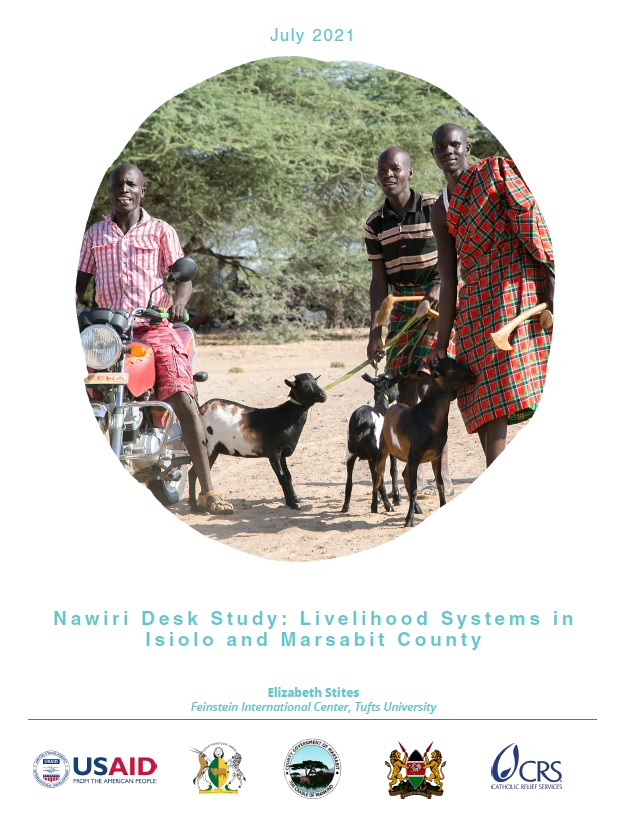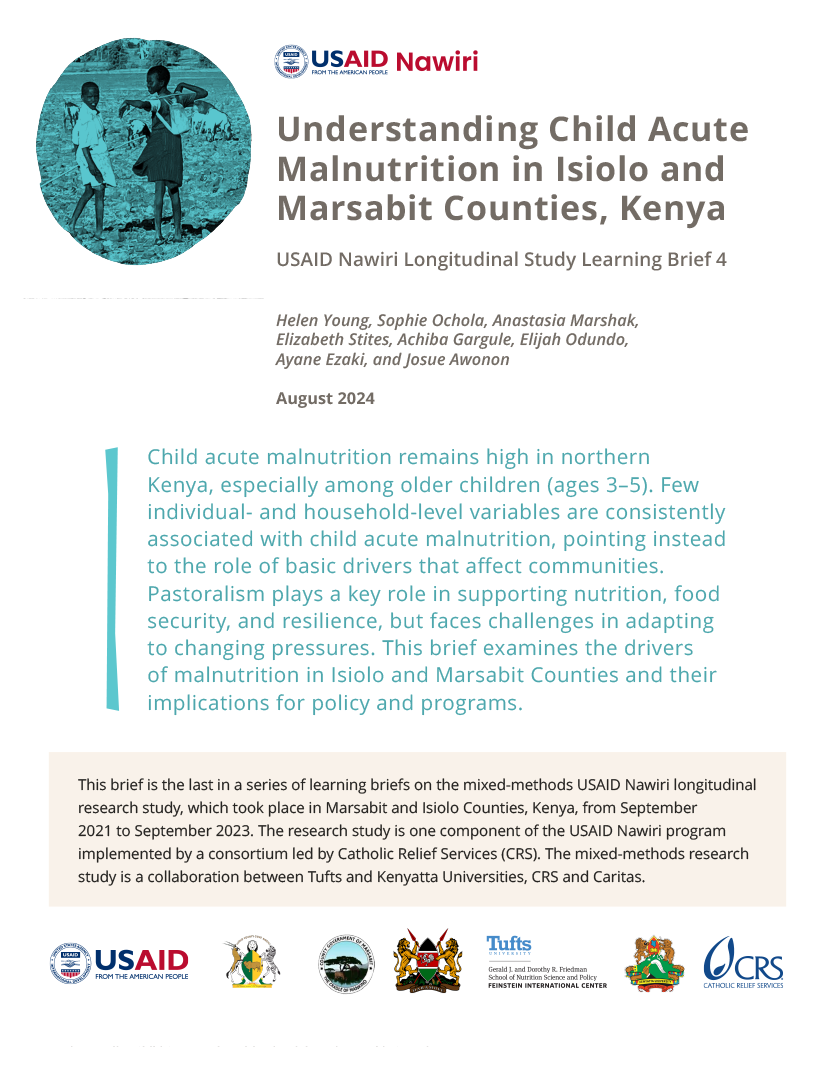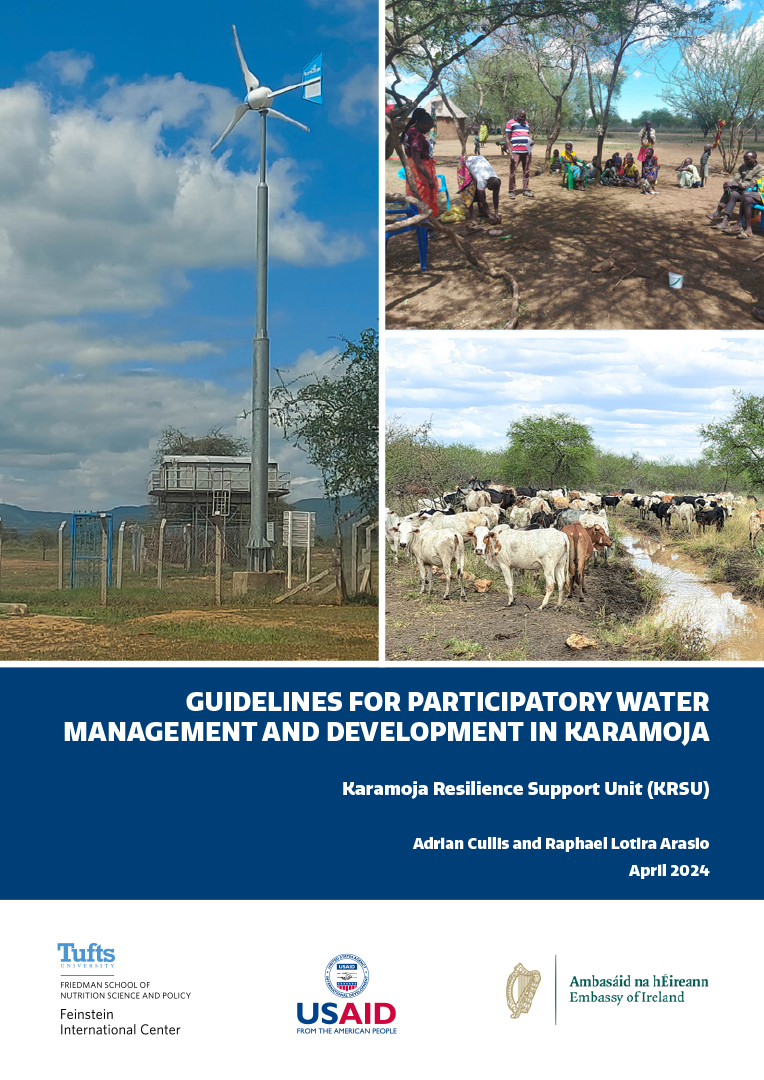This desk study examines the existing knowledge on how livelihood systems influenced nutritional outcomes in the Marsabit and Isiolo counties in northern Kenya. An understanding of existing information and recognition of areas where evidence is lacking is critical to inform and improve national and international policy making and programming to address persistent acute malnutrition in dryland areas such as northern Kenya. Therefore, the study aimed to highlight evidence gaps that that may benefit from new primary data collection.
This synthesis of existing research and literature found the following:
- Dryland ecosystems are characterized by dynamic and non-equilibrium conditions due to unpredictable rainfall and spatial and temporal variations in natural resource distribution. Pastoral livelihood systems have evolved as a direct, appropriate, and largely benign responses to these dynamic and non-equilibrium conditions.
- Pastoralist livelihood systems include the flexibility to manage the unpredictable rainfall and harsh environment of the drylands when policies and institutions allow these systems to function properly.
- Longer term adaptations of livelihood systems take place in response to both systemic shocks and emerging opportunities.
- Some coping strategies and adaptations may be unsustainable and/or coercive. Individuals, households, and communities are most likely to turn to these maladaptive options when they have few or no alternatives.
- Impacts of multi-year droughts have increased due to greater drought severity and inadequate preparedness, mitigation, and response mechanisms.
- While resources are important, it is the broad range of policies and institutions that have the greatest impact on livelihood systems and their success.
Questions that the evidence base could not answer and that are likely relevant for programming and policy making to improve nutritional and food security outcomes include:
- As pastoral livelihoods change and adapt, what are the changes in intra-household roles, decision-making, and livelihood activities? What are the implications for these changes for acute malnutrition?
- As a growing number of people in pastoral areas settle in or around towns, what are the implications for nutritional status?
- How does pastoral mobility intersect with nutritional outcomes and how has this changed over time and for whom (by age, gender, and wealth)?
- As pastoral systems change and adapt, what is the impact on informal social safety nets that households typically rely on for risk mitigation and recovery?
This study is part of the Nawiri (Nutrition in the ASALs within Integrated Resilient Institution) program. Nawiri aims to sustainably reduce persistent acute malnutrition by designing and implementing an approach for supporting, strengthening, and protecting systems and institutions. The project is funded by USAID/Bureau of Humanitarian Assistance (BHA) and the consortium implementing the program in Isiolo and Marsabit counties in northern Kenya is led by Catholic Relief Services (CRS).







